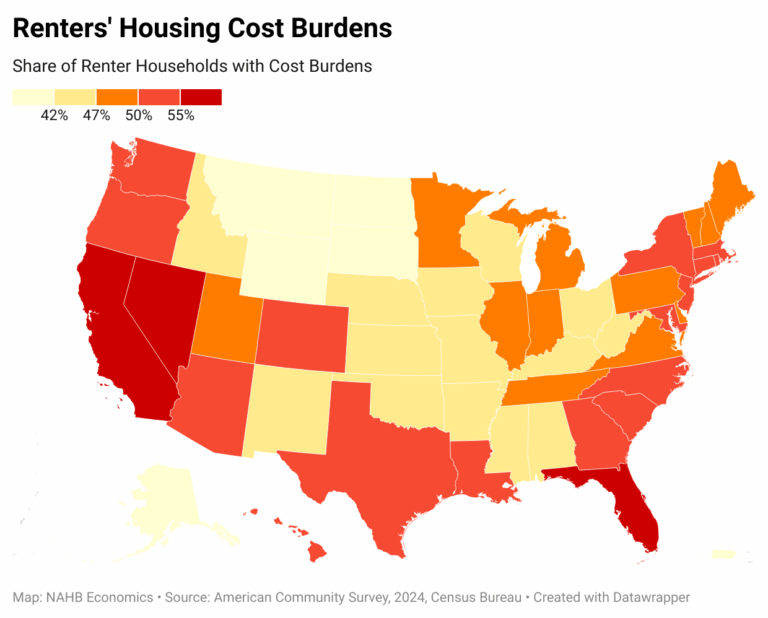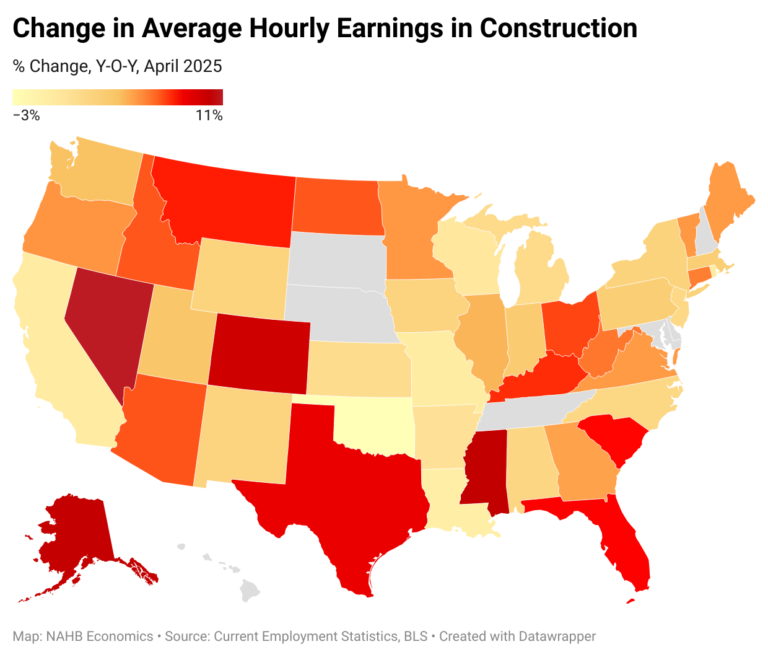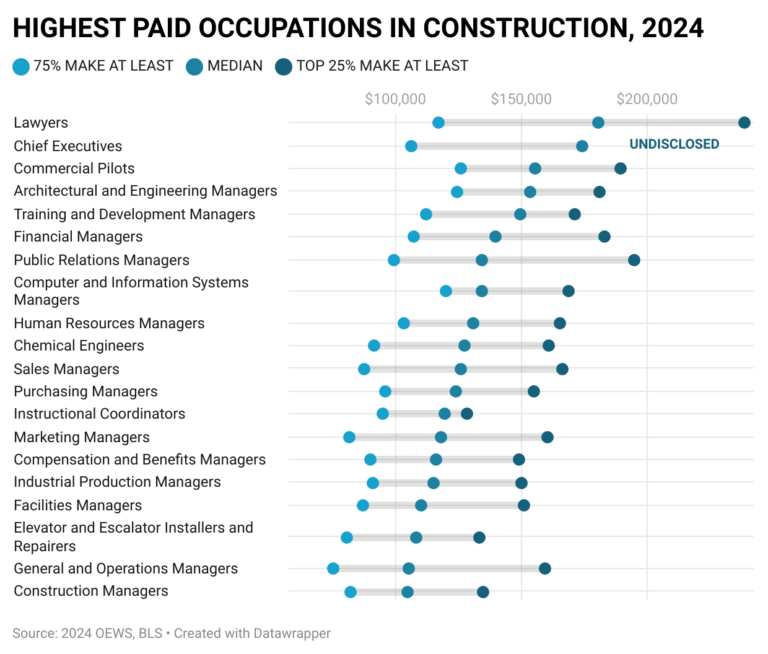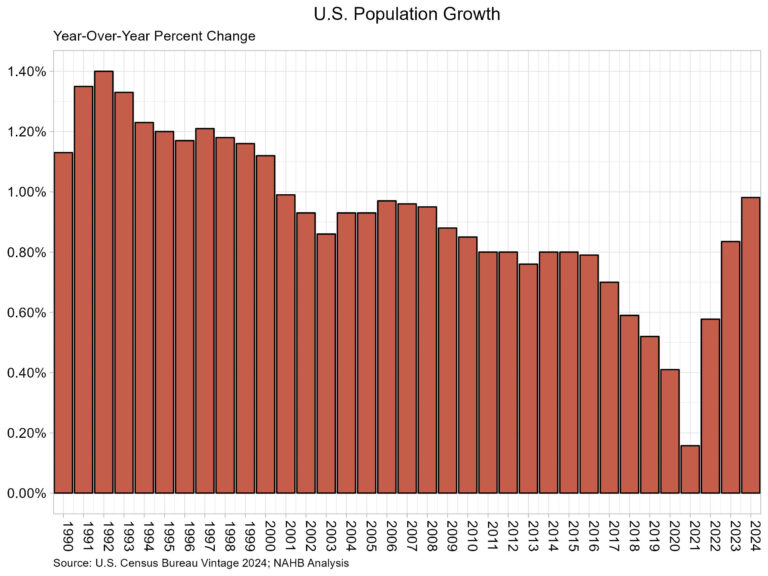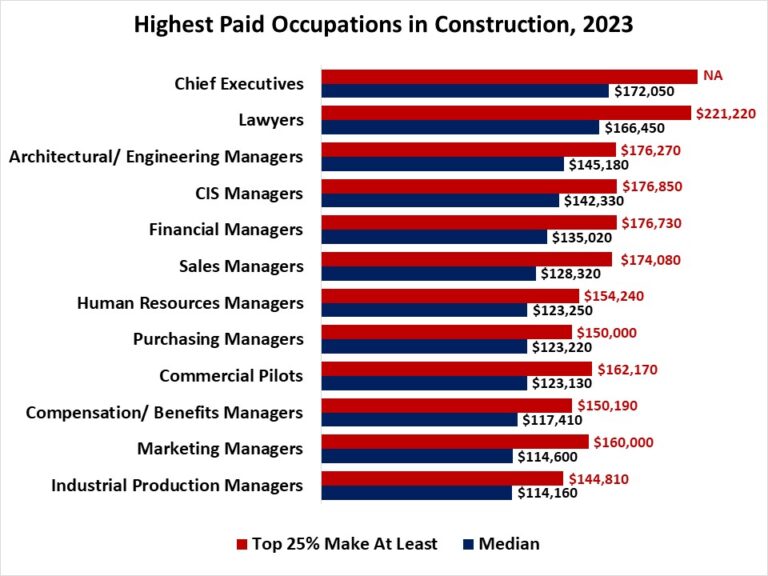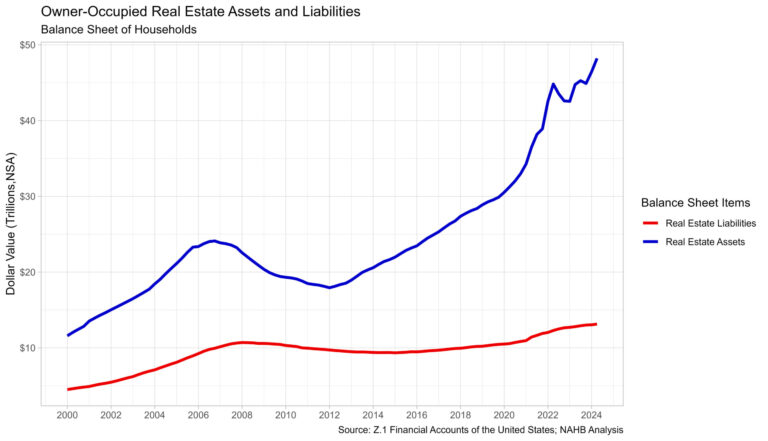Half of payroll workers in construction earn more than $60,320 and the top 25% make at least $81,510, according to the latest May 2024 Bureau of Labor Statistics Occupational Employment and Wage Statistics (OEWS) and analysis by the National Association of Home Builders (NAHB). In comparison, the U.S. median annual pay is $49,500, while the top quartile (the highest paid 25%) makes at least $78,810.
The OEWS publishes wages for almost 400 occupations in construction. Out of these, only 46 are construction trades. The other construction industry workers are in finance, sales, administration and other off-site activities.
In 2024, the highest paid occupation in construction is lawyers with wages of $180,520 per year, and the top 25 percent making over $238,720. Traditionally, Chief Executive Officer (CEO) occupy the top paid position in the industry, but in 2024, they are second on the list, with half of CEOs making over $174,030, while the wages of the top quartile remain undisclosed.
Out of the top twenty highest paid occupations in construction, fourteen are various managers. The highest paid managers in construction are architectural and engineering managers, with half of them making over $153,510 and the top 25 percent on the pay scale earning over $181,150 annually.
The architectural and engineering managers also stand out for having a smaller salary range spread, measured as a percentage difference between the bottom and top 25 percent pay levels. Only computer and information systems (CIS) managers have a narrower pay range among managers in construction. The annual pay of the highest paid 25 percent CIS managers in construction is at least $168,850, which is 40% higher than the top earnings of the lowest paid quartile ($119,990). In contrast, higher-level positions, such as lawyers and CEOs, have a noticeably wider pay scale spread. The top 25 percent highest paid lawyers make more than double of the bottom quartile pay, potentially reflecting a greater range of responsibilities and opportunities for career advancement for lawyers in construction.
Among construction trades, elevator installers and repairers top the median wages list with half of them earning over $108,130 a year, and the top 25% making at least $133,370. This is also the only construction trade that made the industry overall top 20 highest paid occupations list.
First-line supervisors of construction trades are next on the trade list; their median wages are $78,900, with the top 25% highest paid supervisors earning more than $100,150.
In general, construction trades that require more years of formal education tend to offer higher annual wages. Median wages of construction and building inspectors are $66,340 and the top quartile is $89,550. This is also the trade with a relatively wide pay scale spread, with the top 25 percent making at least 74% more than the bottom quartile, potentially reflecting a wider variance in educational attainment, professional responsibilities and expertise of building inspectors.
Carpenters are one of the most prevalent construction crafts in the industry. The trade requires less formal education. Nevertheless, the median wages of carpenters working in construction exceed the national median. Half of these craftsmen earn over $59,890 and the highest paid 25 percent bring in at least $76,290.
Plumbers and electricians, trades that typically require specialized training and licensing, earn higher annual wages. Half of plumbers in construction earn over $62,820, with the top quartile making over $81,740. Electricians’ wages are similarly high.
The construction trade with the greatest pay range spread is pile driver operators. The top 25 percent highest paid operators earn at least $105,100, over 100% more than the bottom quartile. This wide pay scale presumably reflects a greater variety of opportunities and geographic locations (some pile driver operators work on offshore rigs), as well as varying degree of technical expertise and training (some equipment comes with computerized controls and requires additional knowledge of electronics).
In contrast, solar photovoltaic installers, a relatively new construction trade, have a much narrower pay scale. The difference between the annual pay of the top 25 percent ($65,850) and the bottom quartile ($48,350) is 36%, likely reflecting less variation in expertise, training, and geographic prevalence.
Typically, construction trades that require less skill not only offer lower wages but also show less variation in pay. Apprentice workers (helpers of painters, plumbers, electricians, roofers, carpenters, and other construction trades) illustrate this point. These are the six lowest paid construction occupations that simultaneously show the narrowest variation in pay. For example, the highest paid quartile of carpenters’ helpers makes at least $46,720 a year, while the bottom quartile earns at most $35,870, only a 30% difference.
Discover more from Eye On Housing
Subscribe to get the latest posts sent to your email.
